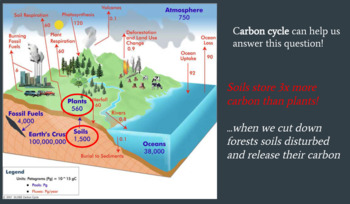Carbon Footprint Project (FULL BUNDLE!): Chemistry or Environmental Science
- Google Sheets™

Products in this Bundle (4)
Bonus
Description
This project gives a template for students to calculate their Carbon footprints using skills that are important for Chemistry and/or Environmental Science (e.g. dimensional analysis, understanding the carbon cycle, understanding that different gases have different warming potential, etc). This lays out a comprehensive way to calculate Carbon Footprint particularly at a boarding school in Southern California. You can easily adapt this project for your needs or how much time you'd like to spend on it! This full bundle packet of resources is approximately 1-2 weeks of class & includes:
a) the project packet
b) a spreadsheet to calculate their carbon footprints
c) four days worth of slides to guide the learning for the class!
Personally I've seen this project make a huge impact on students in understanding their impact on the planet & actually see how the basic skills of chemistry/math are relevant to their lives and how they can make a difference in the world :)





